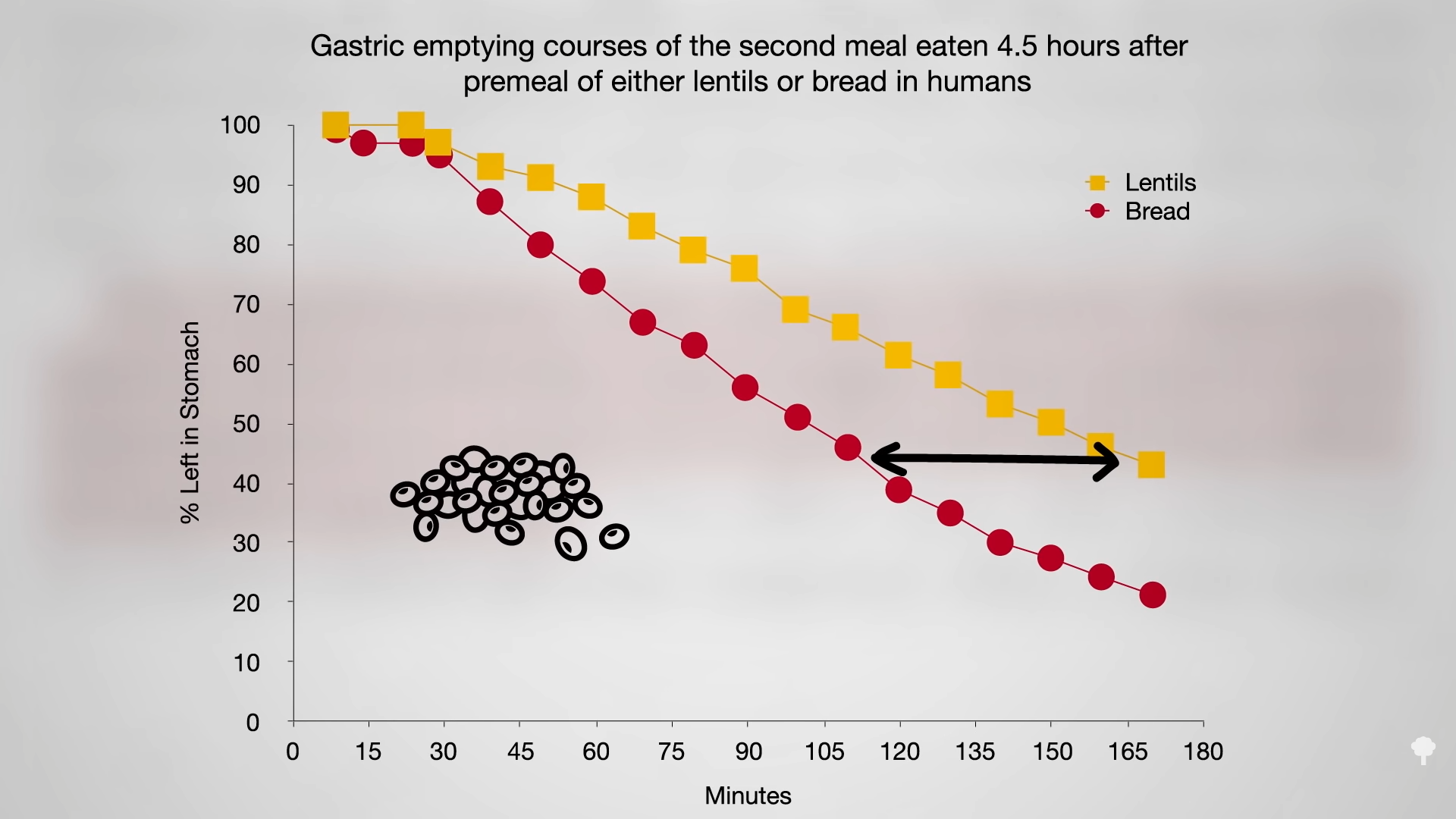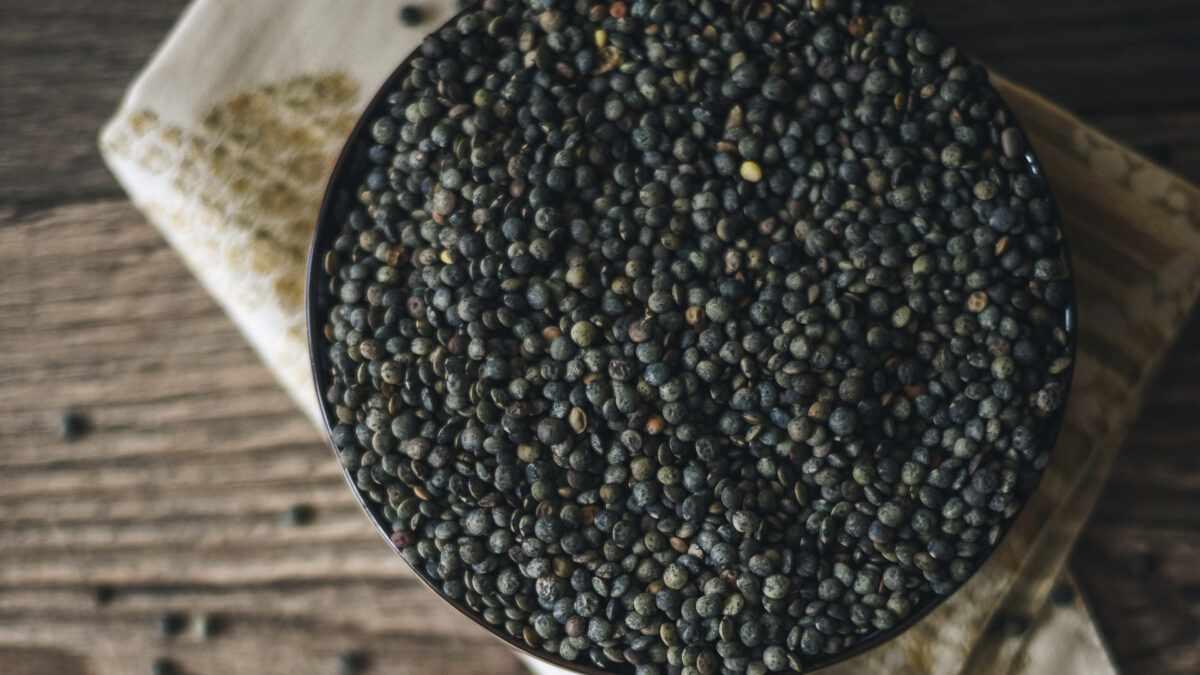Lentils and chickpeas, also known as garbanzo beans, are put to the test.
If you compared the total antioxidant content of ten different legumes, which do you think would come out on top? Researchers looked at the “pinto bean, baby lima bean, red kidney bean, black kidney bean [what I believe we more commonly know as black bean], navy bean, small red bean, black eyed bean [black-eyed pea], mung bean, lentil, and chickpea.” Who can guess the winner and the loser? As you can see at 0:33 in my video Benefits of Lentils and Chickpeas, lima beans came in at number ten at the bottom of the list. Then came navy beans, black-eyed peas, and mung beans, which is what bean sprouts are typically made from, in seventh place. Moving into the winner’s circle, kidney beans. I’ll bet many would have guessed those to be our number one, but, no. They came in sixth, in the middle of the pack. Five legumes beat them out: pinto beans, black beans, the bronze to small red beans, the silver to chickpeas (garbanzo beans), and the gold to lentils. As you can see below and at 1:17 in my video how lentils pull away from the pack in terms of scavenging up free radicals. Lentils top the charts based on a variety of different measures. Might it be because they’re so small and their nutrients are concentrated in the seed coat, so smaller means more surface area? That would be my guess.

When pitted against cholesterol in vitro to try to prevent oxidation, lentils also seem to stand out, perhaps making it “the best among all tested food legumes for the development of a dietary supplement for promoting heart health and for preventing cancers”—or you could just have some lentil soup. (They are the L in my BROL prebiotic mix recipe featured in How Not to Diet and The How Not to Diet Cookbook.) “Aside from lentils, black beans, black soybeans, and red kidney beans” were also found to top the list.
As you can see below and at 2:05 in my video, the ingredients of a breakfast made up of a bagel, cream cheese, margarine, egg, cantaloupe, and whole milk. What would happen if you also served either a bowl of black bean soup, just the amount of fiber found in that bowl of soup, or just the amount of antioxidants found in that bowl of soup? Which do you think works better?
Whole plant foods can be greater than the sum of their parts. “Nowadays, it is popular to isolate and sell functional components of foods as dietary supplements and many supplements are marketed for their ‘antioxidant’ properties. However, functional ingredients”—the extracted ingredients—“may not produce the same effects when delivered outside a whole food matrix” or form. In one study, for example, the researchers compared “the ability of black beans to attenuate postprandial [after-meal] metabolic, oxidative stress, and inflammatory responses [to a crappy breakfast] and determine relative contributions of dietary fiber and antioxidant capacity to the overall effect.” Well, it’s kind of a no-brainer. “Overall, the inclusion of black beans in a meal improved postprandial metabolic responses…that could not be explained by either the fiber or antioxidant fractions alone.”
Beans can even affect our responses to subsequent meals. When our body detects starch in our small intestine, it slows down rate at which our stomach empties. That makes sense, since the body wants to finish digesting before the next meal comes down the pike. So, researchers “hypothesized that eating a slowly digestible starch, such as lentils, may trigger these potent…mechanisms to result in a sustained delaying effect on gastric [stomach] emptying.” You can see below and at 3:34 in my video, a graphic showing the stomach emptying rate at a second meal consumed four and a half hours after eating a “premeal of either lentils or bread,” a quickly digesting starch. The chart doesn’t show how fast your stomach empties itself of the premeal, but how fast it empties a second meal eaten hours after you ate those lentils or that bread. So what happened? A premeal of lentils significantly slowed stomach emptying of a second meal compared with a premeal of quickly digestible bread. In fact, the lentil premeal slowed stomach emptying by about an hour, which means you would feel that much fuller for that much longer after lunch, simply because you had some beans for breakfast.

And, when all the fiber and resistant starch make it down to the large intestine, they can feed the good bacteria in our colon. Researchers fed people a little over a cup of canned chickpeas a day, and, in just three weeks, some of the bad bacteria, the “pathogenic” and “putrefactive bacteria,” got crowded out, nearly halving the number of people colonizing a high ammonia-producing bacteria, indicating that chickpeas “have the potential to modulate the intestinal microbiome to promote intestinal health in humans” within a matter of weeks.
I’ve since expanded my BROL prebiotic mix to include hulled purple barley and rye berries. Together with oat groats and beluga lentils, they form the base for many a sweet and savory dish in the Greger household.
